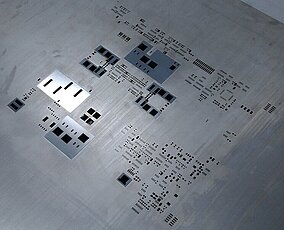Integrating more and more functionalities while at the same time becoming smaller and lighter – this is what modern electronic assemblies must achieve in order to make the development of advanced communication technologies and high-end data transmission possible. And they must be quickly available in large quantities.
For the component assembly process, this means: A higher connection density, smaller connection surface, reduced installation space, more complex components, and a higher throughput. In addition to these requirements, long-term reliability and consistent quality are expected. Since the performance of the devices, machines or installations, depends on the functioning of the component assembly. By implication, this means that the slightest inaccuracies in the production of the component assembly can lead to a malfunction of the entire circuitry.
If components are mounted on the surface of the printed circuit board (PCB) with the so called surface mount technology (SMT), their functioning is determined by the soldered connection between the component and the connection surface on the PCB. This means that the geometric shapes of the laser-cut stainless steel stencils used in solder paste printing play a decisive role when it comes to ensuring the performance of the mounted components.

Tiniest openings at high densities, multiple levels within one stencil, and a throughput requirement of more than 50,000 cut openings per hour call for the highest process speed, accuracy, and flexibility in the manufacturing of the metal stencils. In order to support machine builders in electronics manufacturing and manufacturing services (EMS) in improving the performance of the stencil cutting processes, PI offers a powerful combination of motion platforms, software, and controls. For example, gantry systems allow large travel ranges and high velocities for the movement of the laser during cutting. With the help of a fine control, the vertical position can also be adjusted in order to cut at different heights in step stencils. Control algorithms ensure consistent performance over the entire machining area and also offer a dynamic yaw correction to ensure the orthogonality of the cuts even at high speeds.
Using a dynamic adjustment of the laser power and the laser pulse placement, depending on the direction and speed of movement, the highest degree of accuracy can be achieved even for the smallest opening sizes and at a changing cutting speed.
Also an advanced CAD/CAM software can import different drawing data including the Gerber format.

